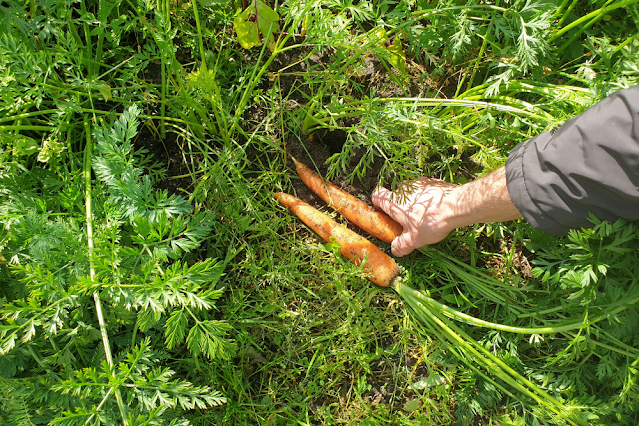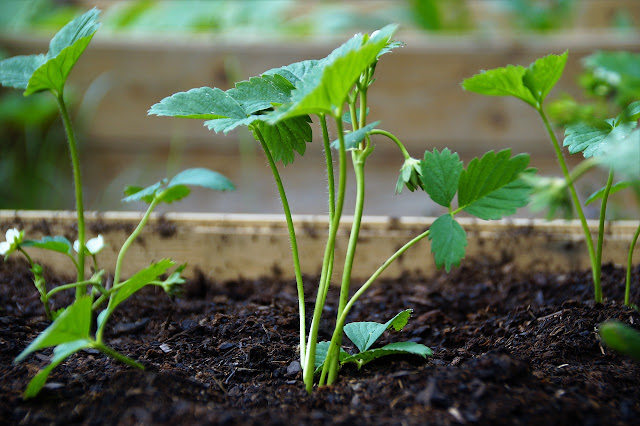Carrots are a tasty root vegetable that is simple to grow and maintain in a home vegetable garden. Carrot plants survive a broad variety of temperatures and require minimal maintenance, making them excellent for planting in backyard garden plots or raised beds by home gardeners.
Basic Types of Carrots
Chantenay Carrot Varieties
The Chantenay carrot, unlike many other varieties of carrots, is small and thick, reaching just six inches in length. Their cone form makes them ideal for gardeners with rocky or heavy soil. They may grow up to three inches in diameter.
It's preferable to harvest them when they're nearly six to seven inches long, as older ones will turn woody in the center and won't taste as wonderful as newer ones.
Danvers Carrot Varieties
These carrots are long, slim, and taper to a point, and were developed in Danvers, Massachusetts, hence the name. They are usually orange in color, but they may also be different colors, and they can survive in poor soil.
These are tasty medium-sized carrots that are also one of the easiest crops to cultivate, making them ideal for new gardeners. They used to come in a variety of colors, including purple, white, yellow, and red, and had a rich color and flavor.
Imperator Carrot Varieties
When you think of carrots, you're probably thinking about Imperator carrots, which are the fairly old carrots that you'll see at your local supermarket. If your soil is rocky or heavy, you should pick a shorter carrot variety, while a light, sandy loam soil is perfect for these sorts of carrots to thrive on. Furthermore, the Imperator carrot requires at least a foot of space to plant and develop; otherwise, they are quite easy to grow.
Nantes Carrot Varieties
When it comes to cultivating carrots at home, Nantes carrots are the easiest to grow. straightforward. They're tasty and fresh. They reach a maximum length of seven inches and feature blunt tips. Because they do not twist and fork like other carrots, these sorts of carrots perform better in rocky and heavy soil. If you're seeking for carrots that are both good and easy to cultivate at home, this is the one to go for.
How to Grow
Carrots in Your Home Garden
Nantes, Danvers, Little Finger, Imperator, and Chantenay are just a few of the carrot kinds available. Carrots come in a variety of colors, textures, and tastes, but they all require comparable growth conditions. Here are some basic planting and growth tips for carrots.
1.Carrots should be planted in the early spring. Carrots can tolerate a wide range of soil temperatures and even survive a mild frost. Carrots like soil temperatures between 50 to 85 degrees Fahrenheit. Early spring, approximately two weeks before the estimated last frost date, is the best time to grow carrot seeds in most areas. Carrots may be planted in the fall and harvested in the early winter in warmer climates.
2.Make sure your carrots get enough of sun. Carrots grow under direct sunlight. Partially shaded carrot plants can live, although direct sunshine is usually preferable.
3.Look for soil that is soft.Carrots grow in sandy, loose soil. Carrots planted in thick soil will have a tough time expanding downward through the earth. Carrot roots can fork and distort when exposed to rocky material. Planting radish seeds with carrot seeds helps to soften the soil. The radish seeds will sprout before the carrots, breaking up hard soil clumps and allowing the carrot roots to develop unhindered. Carrots do not grow well in acidic soil and fare best in gardens with a pH of 6.0 to 6.8.
4.Provide enough room for your carrot seedlings to grow. Carrot seeds can be planted directly in the ground or in containers with a depth of at least 12 inches. Carrot seeds should be planted approximately a quarter of an inch deep, with about an inch and a half between carrot seedlings. It's tough to guarantee appropriate spacing between seeds when planting carrot seeds since they're so little. If carrot sprouts grow within an inch and a half of each other, trim out some of the seedlings to provide room for the remaining carrots to develop. Carrots take a long time to germinate, and seedlings might take up to three weeks to sprout. Water on a regular basis to increase the germination process.
5.Carrots should be watered on a regular basis. Water your carrot plants once or twice a week with one to two inches of water. Mulch and organic matter may keep your soil wet while also lowering the temperature.
6.Keep pests away from your carrots. Carrot rust flies, carrot weevils, and leafhoppers are all common carrot pests. By burrowing into the soil and eating on the carrot roots, rust fly larvae kill carrots. Protect your plants by using a row cover and rotating them once a year. You may also cultivate pest-repellent companion plants like chives and garlic alongside your carrots.
7.Harvest your carrots. It takes 50 to 75 days for carrots to achieve full maturity. Carrots that are harvested too early will be dull and flavorless. Uprooting a couple of carrots and tasting them to see whether the flavor has completely developed is the best method to tell if they're ready to harvest. To harvest carrots, loosen the soil around the plants before twisting and taking them out.



.png)








Comments
Post a Comment